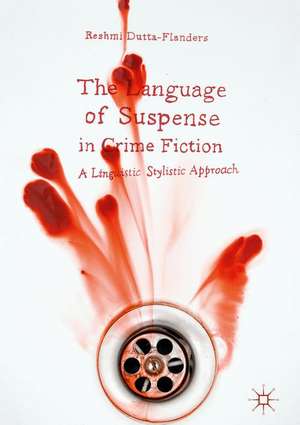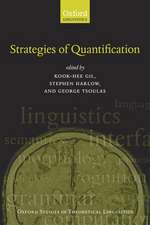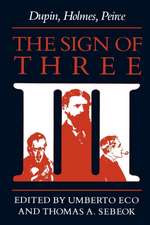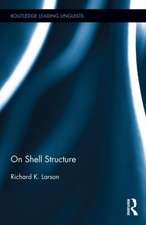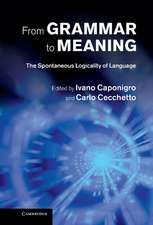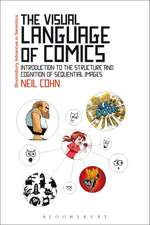The Language of Suspense in Crime Fiction: A Linguistic Stylistic Approach
Autor Reshmi Dutta-Flandersen Limba Engleză Hardback – 4 mai 2017
Preț: 709.44 lei
Preț vechi: 834.63 lei
-15% Nou
Puncte Express: 1064
Preț estimativ în valută:
135.75€ • 142.11$ • 112.32£
135.75€ • 142.11$ • 112.32£
Carte tipărită la comandă
Livrare economică 05-19 aprilie
Preluare comenzi: 021 569.72.76
Specificații
ISBN-13: 9781137470270
ISBN-10: 1137470275
Pagini: 224
Ilustrații: XVII, 500 p. 13 illus., 12 illus. in color.
Dimensiuni: 148 x 210 x 29 mm
Greutate: 0.77 kg
Ediția:1st ed. 2017
Editura: Palgrave Macmillan UK
Colecția Palgrave Macmillan
Locul publicării:London, United Kingdom
ISBN-10: 1137470275
Pagini: 224
Ilustrații: XVII, 500 p. 13 illus., 12 illus. in color.
Dimensiuni: 148 x 210 x 29 mm
Greutate: 0.77 kg
Ediția:1st ed. 2017
Editura: Palgrave Macmillan UK
Colecția Palgrave Macmillan
Locul publicării:London, United Kingdom
Cuprins
- Chapter 1: Manipulated Context.- Chapter 2: Double function.- Chapter 3: Disposition.- Chapter 4: Orientation.- Chapter 5: Contrasting mind styles.- Chapter 6: Conclusion.
Recenzii
“The Language of Suspense is certainly characterised by vastness and richness in terms of analytical tools, bibliographical references and primary texts. … the theories and considerations systematically presented, employed and proposed by Dutta-Flanders constitute a valuable aid to tackle crime discourse, and gain insights into the effects generated by specific rhetorical devices and textual patterns.” (Esterino Adami, Altre Modernità, Issue 21, May, 2019)
“This book makes an extremely valuable contribution to the stylistic and narratological analysis of crime fiction, and serves as a valuable companion work for fans of the genre.” (Jia Xiaoqing, Style, Vol. 52 (4), 2018)
Notă biografică
Reshmi Dutta-Flanders is Honorary Research Fellow at the English Language and Linguistics Department of the University of Kent, UK, where she teaches on a range of topics, including World Englishes, Language in the Media, Semiotics and Stylistics. Her research interests lie in functional nativeness in English language, signs in crime, and in the structure and grammar of crime discourse in criminal narratives, especially offender engagement discourse in crime fiction and in true crime narratives.
Textul de pe ultima copertă
This book introduces readers to linguistic stylistic analysis and combines both literary and linguistic analysis to explore suspense in crime fiction. Employing critical linguistics, discourse analysis and functional grammar, it demonstrates that suspense in plot-based stories is created through non-linear, causative presentation of the narrative. The author investigates how plot sequence is manipulated to ensure the reader cannot resolve the order of events until the end of the tale. From two-dimensional circumstantial detection in mystery stories to three-dimensional re-evaluation of offender orientation, she uses a linguistic-based stylistic framework to analyse offender motive. She also employs a ‘discourse-based’ frame analysis to examine the plot structure of crime stories for micro context and set-up scenarios, demonstrating that it is the unravelling of these devices that creates the suspense in murder mysteries and thrillers alike. Finally, she shows how grammaticization of the offending-self reveals an embedded diegetic space in the offender engagement discourse, provoking an intellectual and affective response and reshaping our overall outlook of the crime in the story. This book will appeal to researchers and students from literary and non-literary backgrounds looking for theoretical and practical advice on the linguistic stylistic approach to reading texts.
Caracteristici
Offers an interdisciplinary perspective on how criminality is presented in a criminal narrative Addresses recent advances and interest in crime studies in literature, forensic linguistics and social sciences Bridges the literary/linguistic divide through macro and microstructure analysis of popular texts
